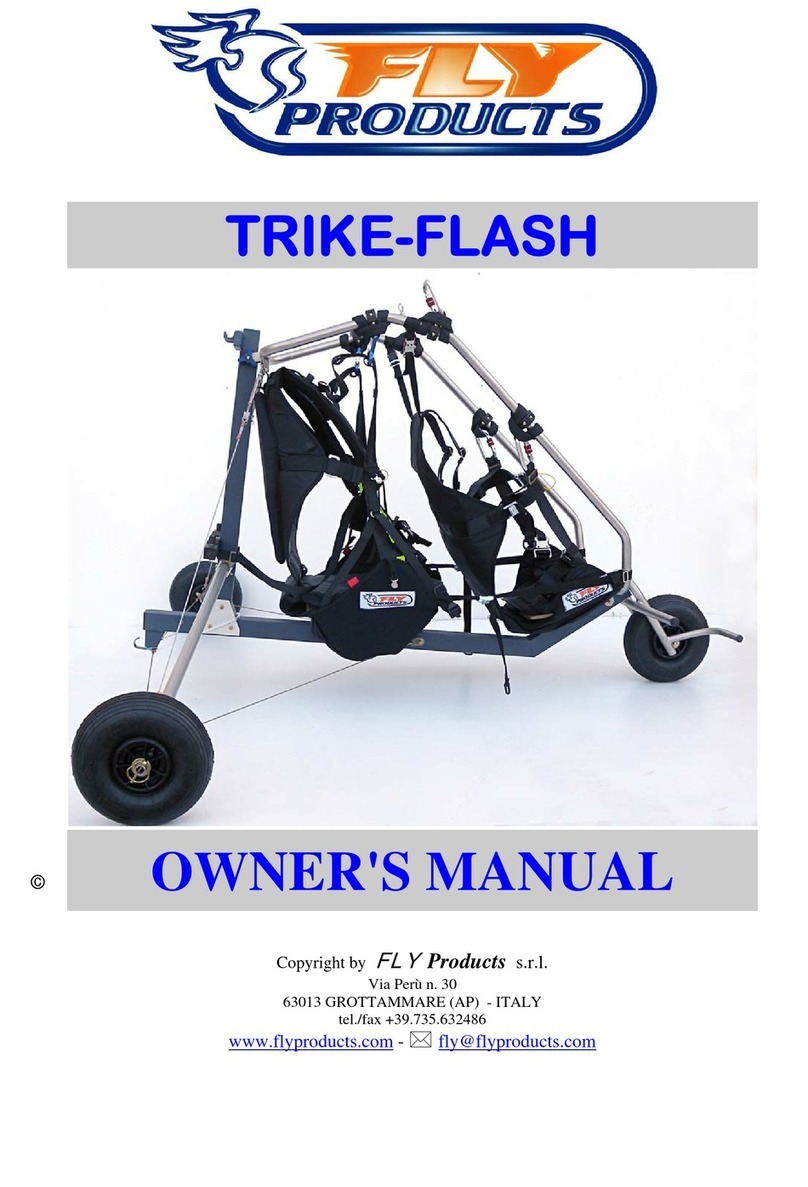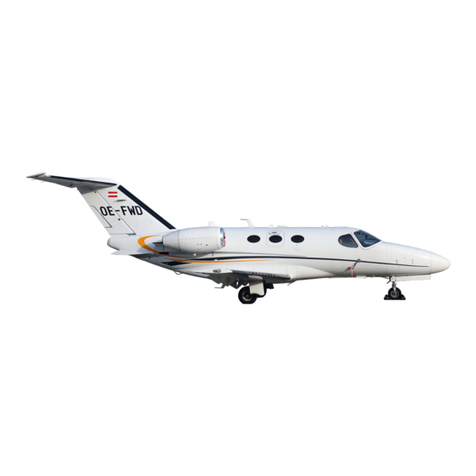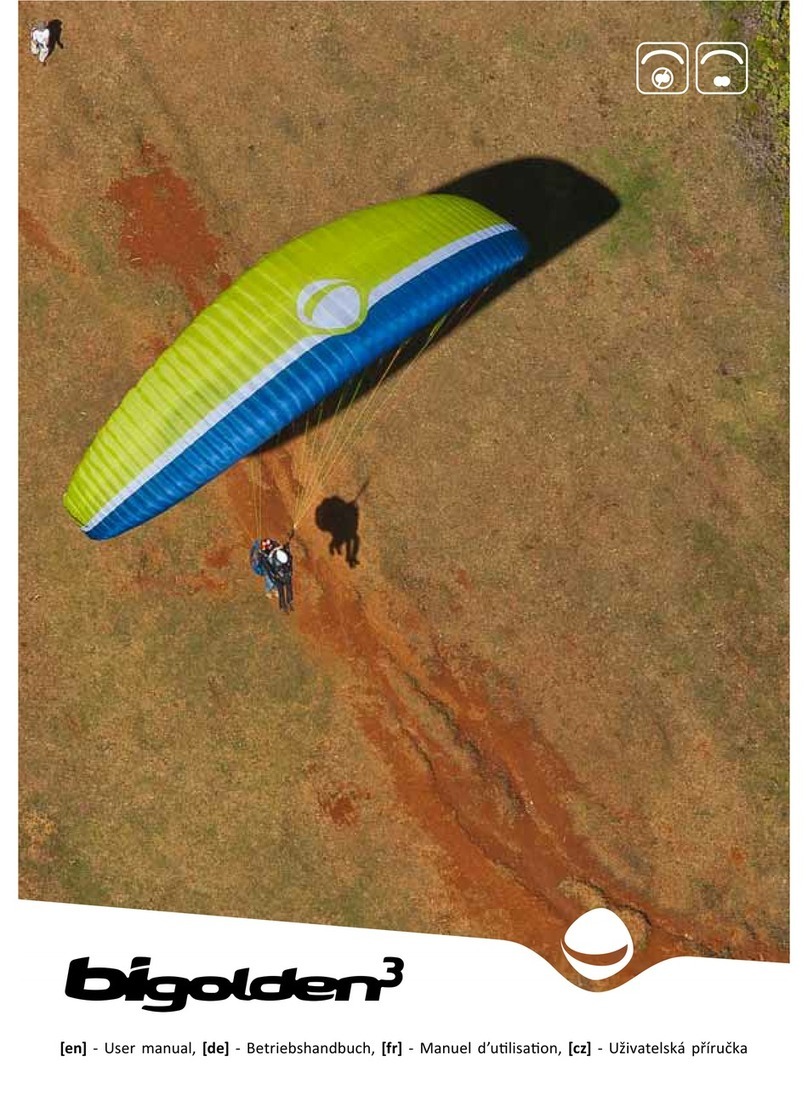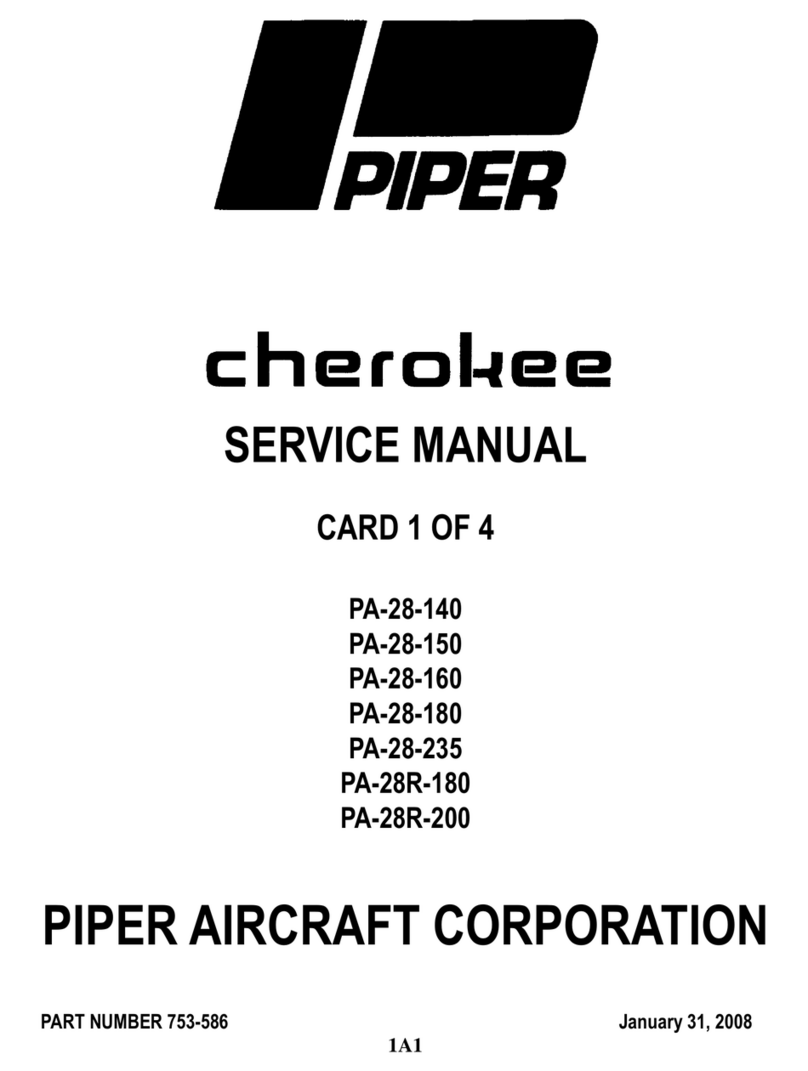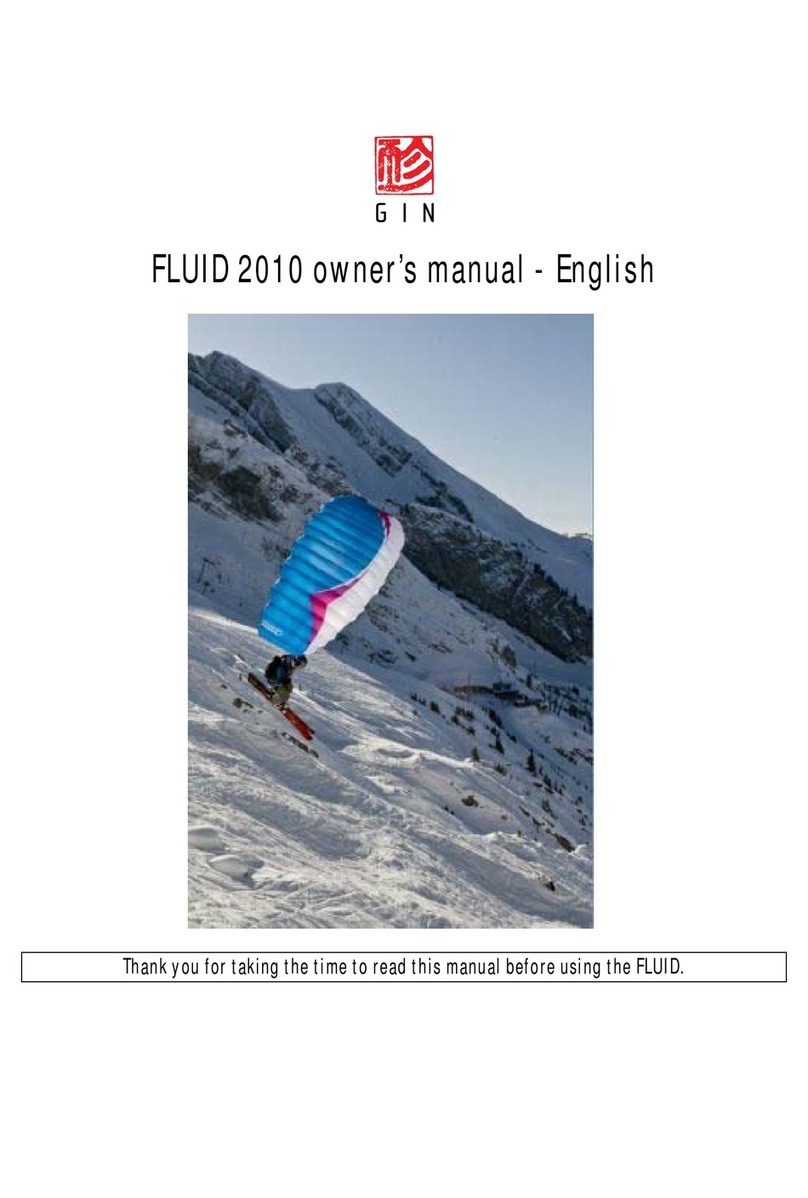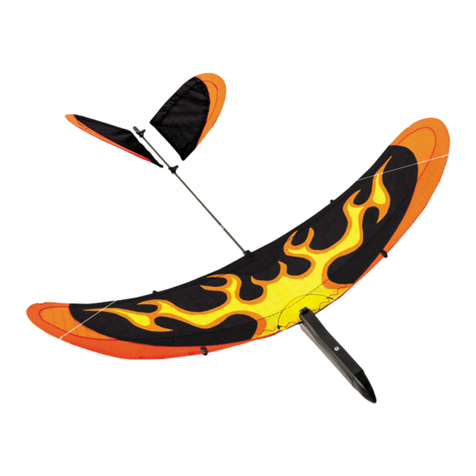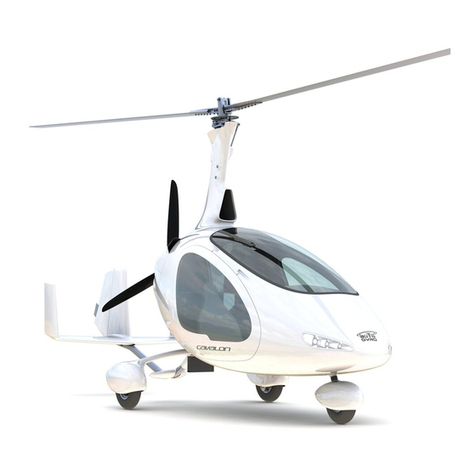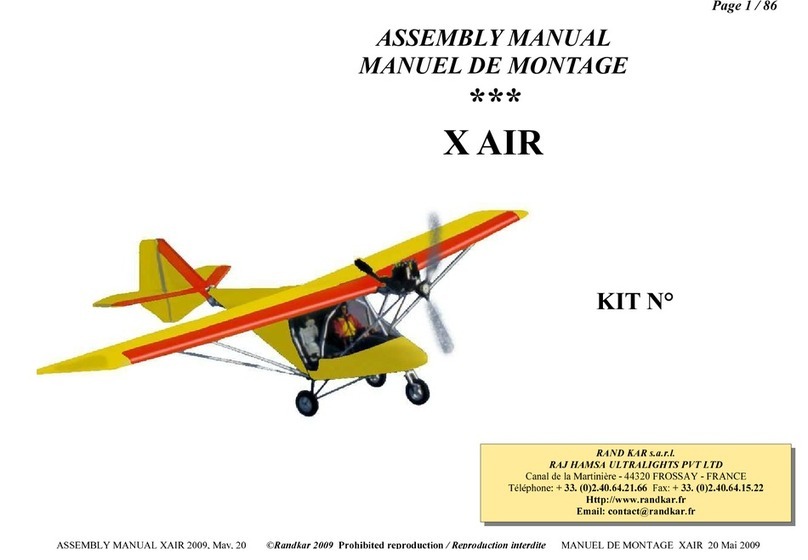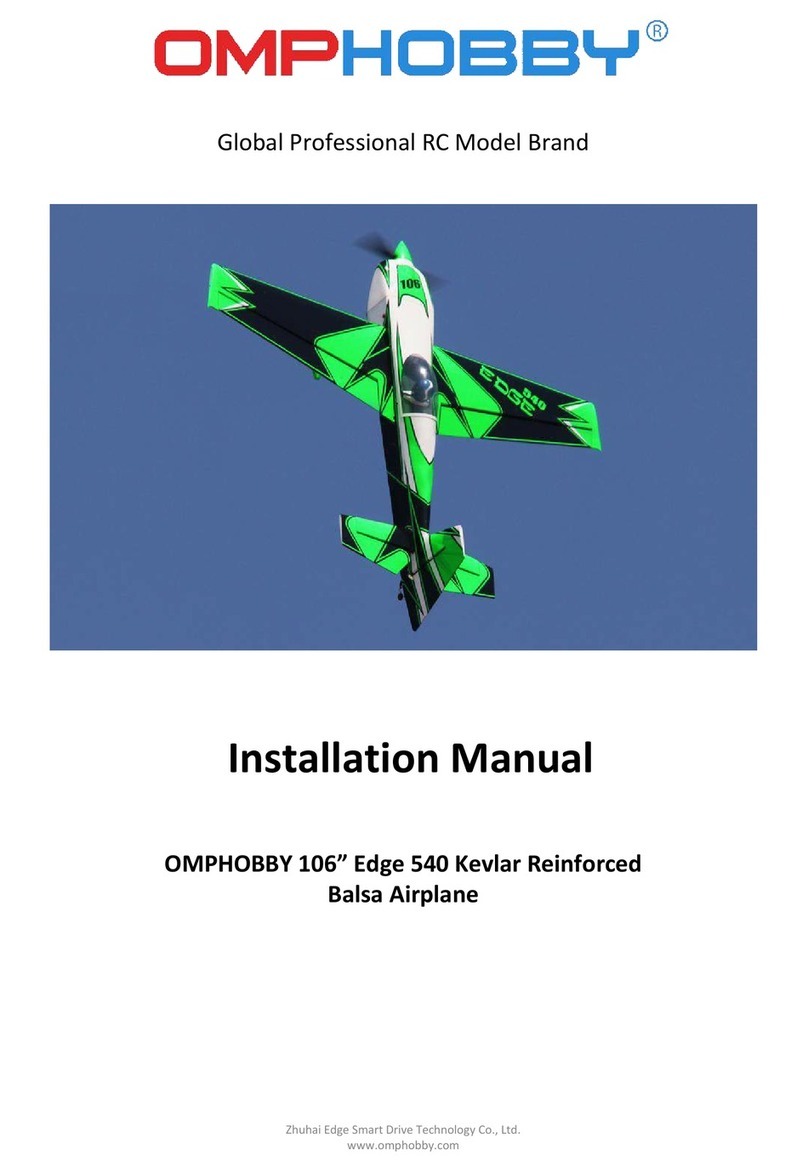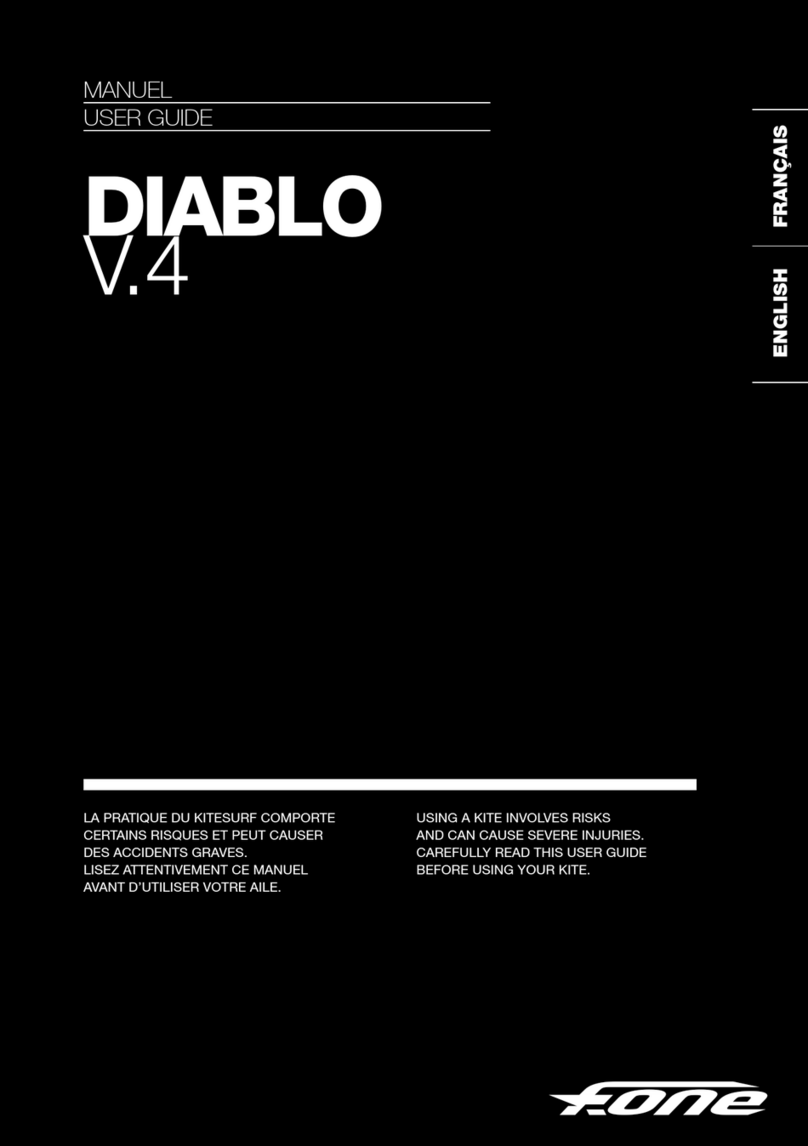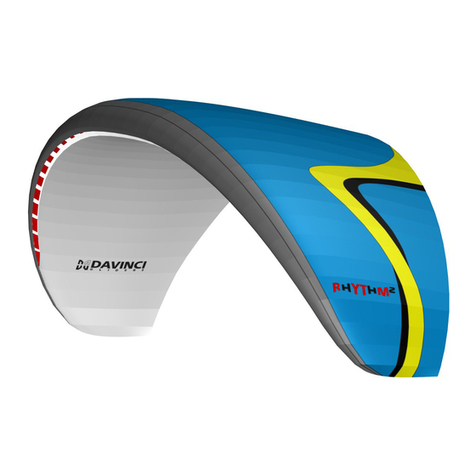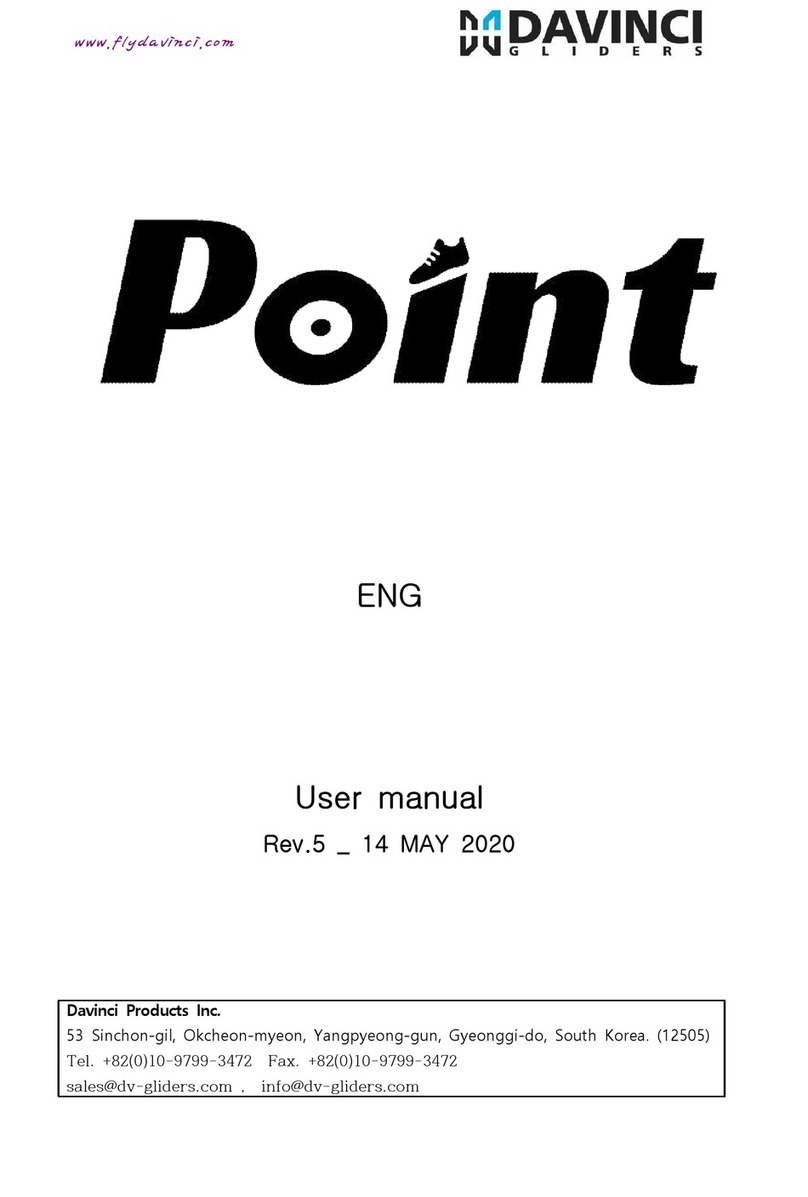Triple Seven Queen 3 User manual


introduced
+386 8 200 43 52 www.777gliders.com
info@777gliders.com
Triple Seven
6.6.2022

Introduction
Welcome
Welcome to the Triple Seven Team! We are excited that
you have chosen to y the Knight 2, as we are condent
that this glider will be the next step in your piloting career.
We wish you exciting ying adventures!
Triple Seven Mission
Our company’s goal is to produce high-quality products
and technologically innovative gliders of all types and
classes. We are striving to develop state of the art para-
gliders, with the optimum compromise between safety and
performance, produced in Europe.
Your success is our inspiration; our goal is your success.
Manual
This document contains complete product information and
instructions to familiarize you with the main characteristics
of your new glider. It includes instructions on how to use
and maintain the wing. However, its purpose is not to serve
as a learning material to pilot this kind of wing. As such,
this is not a ying manual. Flying instructions can only be
taught by ying schools and specially certied instructors.
You must take the time to read this manual carefully before
the rst ight, as a thorough knowledge of your equipment
enables you to y safely and to maximize your full poten-
tial. If you borrow or give your glider to another pilot, please
pass this manual on with it.
If any use of Triple Seven equipment remains unclear
after having read this manual, please contact your local
paragliding instructor, your Triple Seven importer, or Triple
Seven. This product manual is subject to changes without
prior notice.
Please check www.777gliders.com for the latest informa-
tion regarding our products. Welcome to the Triple Seven
Team! We are excited that you to the Triple Seven Team!
We are excited that you have chosen to y the Knight 2, as
we are condent that this glider will be the next step in your
piloting career. We wish you exciting ying adventures!
Summary
1. LTF / EN 1
2. C 1
3. High performance EN/LTF-C 3
I V. Introduction 4
IV.i. Welcome 4
IV.ii. Triple Seven Mission 4
5. Queen 3 7
5.1. Designer’s thoughts 8
5.2. Who is this glider for? 9
5.3. Certication 9
6. Before ight 10
6.1. Elements, components 10
6.2. Visual inspection 10
6.3. Harness 11
6.4. Accelerator settings 11
6.5. Brakes’ adjustments 11
6.6. Weight range 12
6.7. Wing ination 12
6.8. Modications on the glider 12
6.9. Preight safety 12
7. Flying Queen 3 13
7.1. First Flight 13
7.2. Preight check equipment 13
7.3. Final preight check 14
7.4. Ination, control, take-o 14
7.5. Line knots or tangles 14
7.6. Normal ight, best glide 15
7.7. Minimum sink 15
7.8. Accelerated ight 15
7.9. Active ying 15
7.10. Flying in turbulence 16
7.11. Fast decent techniques 18
7.12. Winch launch 19
7.13. Aerobatics 19
7.14. Primary controls failure 19
7.15. Flying in rain 19
7.16. Landing 20
8. Maintenance 20
8.1. General advice 20
8.2. Packing instructions 21
8.3. Storage 21
8.4. Cleaning 21
8.5. Repair 21
8.6. Checks and control 21
IX. Packing Queen 3 22-23
10. Technical data 24
10.1. Technical data 25
10.2. Materials description 26
10.3. Queen 3 risers arrangement
27
10.4. Line plan Queen 3 28
10.5. Line lengths Queen 3 30-37
XI. Safety and responsibility 38
XII.Guarantee 39
XIII. Registration information 40
XIV. Get involved 40
X V. Contact 41

776

9
8
Designer’s thoughts
“It’s been a very exciting process to work on the Queen 3.
The Queen line of EN C gliders embodies most of what I,
as a paraglider designer, am passionate about in our sport;
performance, fun in the air, ease of use, and passive safety.
The challenge of getting to combine these in the most
sensible way is what makes my work interesting – and when
I succeed, also satisfying! If you’re an EN C pilot I KNOW you
will get a lot of satisfaction out of this new wing!”
Who is the Queen 3 for?
Our new EN C glider hits the sweet spot for very many pilots; you
could be someone who’s stepping down from the CCC or EN D
class, but who’s unwilling to let go of the performance advantage
of your previous wings, or you could be someone stepping up from
the EN B class, keen on the expanding horizons but wary of any
added stress – either way the Queen3 is the ideal choice to make
your forays into the skies both efficient, entertaining and safe.
The Queen 3 was certied without the use of collapse lines.

10 11
Before ight
Visual inspection
Before you rush to the rst take-off we recommend that you take
your time to unpack and test your equipment on a training slope.
In this way you will have time and will not be distracted or rushed
to prepare your equipment, and you will be able to do your rst
pre-ight check properly.
The place should be at, free of obstacles, and with light wind.
This will enable you to nicely inate the wing and also familiarize
yourself with it while ground handling. Your new glider will have
been checked already by your Triple Seven dealer, however, as a
pilot you want to do a proper pre-ight check yourself.
Prepare and spread out the glider like you normally would. While
you are spreading out and walking along the glider, observe the
fabric material for any abnormalities. When you are done with the
inspection of the canopy, grab the risers and spread the lines,
check if the risers and line maillons (carabiners) are properly
closed. Identify and disentangle the A1, A2, B, C risers and the
lines, including the brake lines. Connect the risers’ main attachment
points correctly to the harness, watch for any twists and make sure
that the main carabiners are properly closed.
Harness
The Queen 3 has passed EN-C certication testing using a GH
- ABS type harness. This certication allows the Queen 3 to be
own with most harnesses on the market, but keep in mind that
changing the harness greatly inuences the feeling of the glider,
depending on the effectiveness of the harness weight shift. Check
with the harness manufacturer or with your instructor whether your
harness is of the proper type.
The length of the harness chest strap affects the distance between
the main carabiners and the wing’s handling as well as your stability
in the harness. Tightening the chest strap increases your stability,
but greatly increases the risk of twisting after a collapse. A tight
setting also increases the tendency to maintain a deep spiral. As a
rule of thumb, a more opened chest strap gives you more feedback
from the glider, which is good for your climbing efficiency and
increases safety in a ying incident. But we strongly recommend
adjusting the length of the harness chest strap according to the
lengths used during certication. This setting varies from 42cm to
50cm depending on the harness size.
Check the settings used during testing under the certication
specimen section. We recommend making your rst ight with
the Queen 3 using a familiar harness. As a rule of thumb, if you
want to experience the feeling of new equipment, change only one
component at a time.
Accelerator settings
The Queen 3 speed system increases the speed of the glider
by 20km/h with the accelerator at full travel. Before attaching the
accelerator system to the Queen 3 risers, check that the speed
system inside your harness is correctly routed and that all pulleys
are set correctly. Make sure there are no knots or other obstacles
that might make the accelerator get stuck during usage.
The length of the speed bar lines should be adjusted on the ground
so that your legs are fully extended at the point of full accelerator
travel. While setting the speed line lengths make sure they are
long enough, so that the speed system does not accelerate the
glider by itself. If in doubt how to properly set the accelerator
system, please consult your instructor or Triple Seven dealer.
Brake line adjustments
The length of the brake lines has already been adjusted by the
manufacturer and is the same as used during the certication test
ights. The length is set and ne-tuned during the development of
the glider, therefore generally there should be no need for
adjustment. We recommend ying this setting for a while, and you
can still change it afterwards if you wish to do so. If you change the
length of the brake lines, do it in a step by step process of 2 cm
at a time. Bear in mind that if you make the brake lines too short,
they might be applied unintentionally whenthe speed system is
engaged. The brake travel is greater than, up to 80 kg - 55 cm,
from 80 kg to 100kg - 60 cm and over 100 kg - 65 cm.

12 13
Weight range
Each size of the Queen 3 is certied for its own weight range.
The above mentioned weight includes the weight of the pilot and
complete paragliding equipment, together with the glider, harness,
all accessories and optional ballast. Every glider changes its
characteristics when changing the take-off weight. We recommend
that you always y your glider in the specied weight range.
To measure your take-off weight, step on a scale with all your
equipment packed in the rucksack.
Lower half of the weight range
Flying the Queen 3, as any other glider, in the lower part of the
weight range, causes the agility of the glider to decrease, and when
ying through turbulence its tendency to collapse increases slightly
compared to ying it in the upper wing loading range. However,
reactions after a collapse are less dynamic and sink rate improves.
Therefore, if you mainly y in weak conditions, you might prefer
this weight range.
Upper half of the weight range
Again, as with any other glider, ying the Queen 3 in the upper
part of the weight range increases the stability and agility of the
glider. Consequently, there is a slight increase in the glider’s speed
and even gliding performance, especially when ying into wind.
If you normally y in stronger conditions and you prefer relatively
more dynamic ying characteristics, you should aim to load up for
the higher weight range. Reactions after a collapse may be more
dynamic in the upper half of the weight range.
Wing ination
Still being on the training slope and having prepared and checked
everything, inate your wing and play with it to get a feel of your
new glider while ground handling. By doing this you are making a
nal check of the canopy and lines, and that everything is in order.
You will nd that the Queen 3 inates very easily and smoothly
without excessive energy and with minimum pressure while moving
forwards. For ination and lifting the glider you
may use only the A1
risers. Do not pull on the risers just with your hands, instead use
your whole harness.Your hands should only accompany the rising
movement of the wing. When the wing is above you, apply correct
pressure on the brake lines and the glider will stay above you.
Modications on the glider
Any modications of the lines or risers’ speed system cause the loss
of the certication, as does ying the wing outside the weight range.
Preight safety
Before ying the Queen 3, you should obtain all practical and
theoretical training and the certication for ying this kind of
wing. Pilots should be physically and mentally t, using complete
paragliding equipment and ying only in conditions suitable for
their level of ying expertise.
Flying the
Queen 3
First Flight
Now that you have already familiarised yourself with your new glider
while ground handling on a training slope, you are ready for your rst
ight. For the rst ight we recommend that you choose a familiar
ying area and that you y your new glider in calm conditions.
Preight equipment check
Before every ight you need to do a pre-ight check and to inspect
any other equipment. Learn to do this, as it takes no extra time.
This procedure may vary, depending on the instructor, pilot or
equipment settings. Some pilots have their wing always connected
to the harness. However you should have a consistent method of
checking and preparing your equipment and doing the nal pre-
ight check.
1.
After the arrival on take-off, assess the suitability of ying
conditions.
2.
While walking around the canopy preparing and spreading
out the wing, you should at the same time inspect the canopy.
3.
After you check the lines and connect the risers to the harness,

14 15
grab the lines and slide them through your ngers as you walk
towards the canopy. In this way you double check that the lines
are not tangled, stuck or damaged. If meanwhile the canopy
moves, walk around and correct it again.
4.
Inspect the harness, reserve, speed system and all connections.
Final preight check
1.
Strap into the harness. The leg straps should be the rst to
be connected on the take-off and the last ones to be released
after the ight. Make sure you are strapped in correctly and
wearing a helmet.
2.
Check the risers for twists, and that the carabiners are properly
closed. Check that the speed system is not affecting your risers
– accelerating unintentionally.
3.
Check the lines. The A riser lines should be on top, and all
lines untangled. Check that none of the lines are lying over or
below the canopy.
4.
Check the canopy. The glider should be spread out in the shape
of an arch and all cells open.
5.
Check the wind, take-off and airspace. The wind should be
favourable for take-off and the pilot’s level of expertise.Airspace
should be clear, together with the take-off area.
Ination, control, take-off
The Queen 3 has easy take-off behavior and does not require any
additional advice regarding the forward or reverse launch. Try to
divide and practice the take-off procedure in three steps.
1. Inating and raising the glider
2. Controlling the wing and wing check
3. Accelerating and take-off
It is always advisable to practice and improve proper launching
techniques as this reduces unnecessary additional stress before
the take-off.
Wind speeds up to 25 to 30km/h are considered strong and extra
care is required for the ight. If you are launching in strong winds
we recommend the reverse launch technique, with your brakes
in the right hands at all times. Launch the glider with a gentle pull
and then walk towards it if necessary to reduce the relative wind
force. When the glider is above you, gently control the wing and
take off.
Line knots or tangles
If you fail to observe a line knot or you nd yourself ying with a
knot before being able to prevent the unintentional, uncontrolled
take-off, try to stay away from the ground or other pilots by ying
away from the mountain, before taking any corrective action on
the wing. This means that you weight shift and/or counter brake
the opposite side of the wing and control the ying direction with
the least amount of force needed for the wing to y straight away
from the mountain. Be careful not to apply too much brake or to y
too slowly to avoid a stall or spin. When you are at a safe distance
away from the mountain and you have gained relative height by
ying away, you may want to gently and briey pull the lines that
are tangled with the knot. If the knot is on the brake lines you might
want to gently and briey “pump” the appropriate brake line. Please
note that by pulling the lines, the knot may get stuck in a worse
position and the situation may escalate also to a stall
or spin. Therefore, if you estimate that you can control the wing
relatively safely and that the knot is not released by gently and
briey pulling the tangled lines, immediately y to the landing zone
and land safely.
Normal ight, best glide
Without any brakes applied and without using the accelerator,
the wing ies at the so-called “trim speed“. In calm air this is
theoretically the best glide speed. The best speed glide depends
on the glider’s polar and air mass, vertical and horizontal speed.
We recommend reading more about the theory of the best glide
and McCready theory.
Minimum sink
If you apply brakes on both sides for about 10 -15 cm you will slow
the glider to the theoretical minimum sink speed. But we do not
recommend using this speed even for thermalling, as you
achieve much better climbing and control by letting the glider y
with its “trim speed” and natural energy. With a proper take-off
weight you will nd that the glider has great climb, reactions and
agility.
Accelerated ight
After you get comfortable ying the Queen 3, you can start practicing
using the speed system, which will provide better performance
while gliding against the wind and through a sinking air mass. The
Queen 3 was designed to be stable through its entire speed range,
but this requires the use of active ying techniques. Note that any
glider becomes less stable while ying accelerated and that the
risk of a collapse is higher in accelerated ight. Additionally, the
reaction of the glider to a collapse in accelerated ight is more
dynamic in comparison with the one which occurs at trim speed.
We recommend that you avoid accelerated ight near the ground,
and that you are very careful when using the accelerator in turbulent
conditions. Use a soft speed bar, which enables you to accelerate
the glider by using only one leg.To control the direction use weight
shift. To control the pitch change the amount of the speed bar. Do
not use or pull the brakes while using the speed bar. Use the speed
bar progressively when accelerating and instantly release when
you feel a slight loss of tension, pressure or even a collapse. If you
encounter a collapse while using the accelerator, release the speed
bar immediately before taking any other corrective action. Always
keep more distance from the ground when using the speed bar.
Active ying
This is a basic ying technique for any pilot. It implies permanent
control and the correction of pitch and roll movements together
with the prevention of any deations or collapses. In a nutshell this
means ying straight through active or turbulent air, so that the
pilot keeps the glider above their head at all times, compensating
and correcting any unwanted movements of the wing.
A few examples:
• While entering a strong thermal, the wing will stay a little bit
behind relative to the pilot. The pilot should let the brakes up,
allowing the wing to y faster and to catch up.
• If the wing surges in front of the pilot, the pilot should counter
brake until the surge is controlled and then release the brakes

16 17
to let the glider y normally again.
•
If the pilot feels a loss of tension on the wing or a loss of
pressure on the brakes on one side of the wing, they should
smoothly apply brake on the side with loss of pressure and/or
weight shift to the opposite side until the pressure returns. After
that, again release the brake and/or weight shift to the neutral
position and let the glider y normally.
The key in all cases is to avoid an over-correction and not to
maintain any correction longer than necessary. After each input,
let the glider y normally again, to re-establish its ying speed.You
can train or get a feeling for most of these movements safely on
the ground while ground handling your glider. Good coordination
of your movements and coordination with the wing on the ground
will allow you a quick progression when ying actively in the air.
The next step is to attend SIV courses where you should also get a
better understanding of the full brake range and the glider’s speeds.
Flying in turbulence
Wing deations can occur in a strong turbulence. The Queen 3
is designed and tested to recover without pilot input in almost all
situations, by simply releasing the brakes and letting the glider
y. To train and understand all the manoeuvres described, attend
SIV courses.
Cascade of events
Many reserve deployments are the result of a cascade of over-
corrections by the pilot. Over-corrections are usually not problematic
because of the input itself or its intensity; but due to
the length of time the pilot continues to over-handle. After every
input you have to allow the wing to re-establish its normal ying
speed. Note that over-corrections are often worse than no input
at all.
Asymmetric deations
Strong turbulence may cause the wing to collapse asymmetrically.
Before this occurs the brake lines and the feeling of the harness
will transmit a loss of pressure to the pilot. This feedback is used in
active piloting to prevent a collapse. If the collapse does occur, the
Queen 3 will easily re-inate without pilot reaction, but the wing will
turn towards the collapsed side. To prevent this from happening,
turn and actively recover the asymmetric collapse by weight shifting
and applying appropriate brake input on the side that is still ying.
Be careful not to over-brake your wing’s ying side. This is enough
to maintain your course and give the glider enough time to recover
the collapsed side by itself. To actively reopen the collapsed side
after course stabilisation, pull the brake line on the collapsed side
rmly and release it. You can do this several times with a smooth
pumping motion. After the recovery, release the brake lines for
your glider to regain its trim speed. You must be aware of the fact
that asymmetric collapses are much more dynamic when ying
accelerated. This is due to the difference in weight and the inertia
of the canopy and the pilot hanging below.
Symmetric deations
Symmetric or frontal deations normally reopen immediately by
themselves without pilot input. The glider will then regain its airspeed
accompanied by a small surge forwards. To actively control this
event, apply both brakes slightly when the collapse occurs and
then instantly release the brakes to let the glider y. Be prepared
to compensate for the glider’s slight surge forward while returning
to normal ying.
Wing tangle, cravat
A cravat is very unlikely to happen with the Queen 3, but it may
occur after a severe deation or in a cascading situation, when
a wing tip may get caught in the glider’s lines. A pilot should be
familiar with the procedure of handling this situation with any glider.
Familiarise yourself with the stabiliser main line (“stabilo” line,
outside B-line on B riser) before launching. If a cravat occurs, the
rst thing to do is to try to keep the glider ying on a straight course.
Do this by weight shifting and counter braking the untangled side.
After that, grab the stabilo main line on the tangled side and pull it
down until it becomes tight again. At this point the cravat normally
releases itself.
Possible solutions of the cravat situations (consult your SIV
instructor):
• Pulling the wing tip “stabilo” line
• Using a full stall, but it is essential to be very familiar with this
manoeuvre. You will also want to have a lot of relative altitude.
• If you are in a situation where you have a cravat and you are low
in rotation or even with twisted risers, then the only solution is the
reserve parachute.
Negative spin
In normal ight you are far from negative spin. But, certain
circumstances may lead to it. Should this occur, just release the
brake lines progressively and let the wing regain its ying speed.
Be prepared for the glider to surge forward, and to stop the surge
with brake input if necessary.
Full stall
A full stall does not occur unintentionally on its own – it happens
if you pull both brakes down 100% and hold them. The wing then
performs a so-called full stall. Releasing the brakes improperly may
lead to a massive surge of the glider with danger of falling into
the canopy. This is a complex manoeuvre and as such outside the
scope of this manual.You should practice and learn this manoeuvre
only on a SIV course under professional tuition.
Deep stall
Generally when in deep stall, the wing has no forward motion
and at the same time high sink speed. When in deep stall the
wing is almost fully inated. With the Queen 3 it is very unlikely
to get into
this situation unintentionally. This could possibly happen if you
are ying at a very low speed in turbulent conditions. Also the
porosity of the material and line stretch on a very old glider may
increase the likelihood of a deep stall.

18 19
Fast descent techniques
Fast descent techniques should be familiar to any pilot, as they
are important resources to be used in certain situations. These
manoeuvres should be learned at your ying school as a part of
paragliding pilot training. Nevertheless, we recommend practicing
these manoeuvres on SIV courses under professional supervision.
Big ears
This is a safe method to moderately loose altitude while still
maintaining forward speed. To do big ears, release any brake line
loops around your wrist, set your leg on the speed bar, but do not
push it. Now pull the outer A lines (the A2 risers in the drawing)
on both sides. As long as you keep the A2 risers pulled, the wing
tips stay folded and the sink speed increases. To regain normal
ight, release the A2 risers, and if necessary apply the brakes with
short impulse movements. Release big ears at least 100 meters
above the ground. While using big ears, the wing speed decreases,
which is why we also recommend using the accelerator half way
in combination with big ears to maintain enough horisontal speed,
and to additionally increase vertical speed. Be careful not to pull
the brakes while ying with big ears! Steering is done by weight
shift only. Always do the big ears rst and then accelerate; not the
other way around as you will risk getting a frontal collapse.
B line stall
While in the B-stall the glider has no horizontal speed and the
sink rate increases to about -10m/s. To enter the B-stall reach
for the B risers just above the maillons and pull both B line risers
symmetrically down for about 20 cm. To exit the manoeuvre,
simultaneously release both risers quickly. On exit the Queen 3
gently dives without deep stall tendencies.
Spiral dive
The spiral dive is the most demanding of all three manoeuvres
(Big ears, B-stall, Spiral) and should only be trained gradually and
always with plenty of altitude. The spiral dive should be practiced
and learned on a SIV course under professional supervision. To
enter the spiral, weight shift to the desired side and gradually apply
the brake on the same side. Then let the wing accelerate for two
turns and you will enter the spiral dive.
While in the spiral, you can control your descent rate and bank
angle by applying more or less inner brake. Depending on how
steep the spiral is you may need to use also outer brake. To exit
the spiral dive we recommend that the pilot is in the neutral weight
shift position. If you release the inner brake, the wing exits the
spiral dive by itself.
The Queen 3 has no tendency to become stable in the spiral until
-14m/s descent, but you should be aware of the procedure for
exiting a stable spiral.
To exit a stable spiral dive, weight shift to the opposite side of the
turn and apply the outer brake until feeling the deceleration of
the wing rotation. Then release the outer brake and let the glider
decelerate for the next couple of turns. To avoid a big pendulum
movement after exiting the spiral, apply a short brake input on the
inner side before the glider exits the spiral.
Warnings (Spiral dive):
•
There is a possibility of losing consciousness while in the spiral
dive. Never make a spiral with more than 16-18m/s descent
speed.
• In fast spirals it may be necessary to apply the outer brake to
begin exiting the spiral dive.
• If practicing the spiral dive low, a pilot may not have enough
altitude or time to safely exit this manoeuvre.
Winch launch
The Queen 3 is easy to tow-launch using a winch and has no
special characteristics to consider during this form of launching.
To practice this launching technique special training is needed
and you have to
be aware of the procedures and dangers, which are specic for
towing. We do not recommend using any special towing device
which accelerates the glider during the winch launch.
Aerobatics
The Queen 3 was not designed for aerobatics, therefore, these
may not be performed on this glider. In addition to this, any extreme
manoeuvres place unnecessary stress on the glider and shorten
its lifespan.
Primary controls failure
If for any reason you cannot use the brake lines, you have to pilot
the wing to the landing place by using weight shift. Weight shift
should be enough to safely land the glider.You can also use the C
risers to control and steer the wing. Be careful not to over-handle
the glider by using the C riser technique when steering. By pulling
the C risers too strong you can cause a stall or a negative spin.
Land your glider at trim speed without using the C risers,
to avoid over-handling the glider low above ground. We
recommend using weight shift.
Flying in rain
If you are accidently caught-out in a rain shower, it is best
to land immediately. If your wing becomes wet in the air it is
advised to maintain accelerated ight using the speed bar and/
or releasing the trimmers, even during the nal approach. DO
NOT use big ears as a descent technique, big ears increases
drag, and with a wet wing this will further increase the chances
of a parachutal stall occurring. Instead, lose height with gentle
360’s and maintain your air speed at all times. If your wing
enters parachutal stall when wet, immediately release the
trimmers and accelerate the wing to regain airspeed.

20 21
Landing
Similarly to the take-off, the Queen 3 landing characteristics are
easy. In turbulent conditions it is advisable to apply about 15% of
brake input, to increase stability and the feeling of the glider.
Before landing, adopt the standing position as this is the most
effective and the safest way to compensate the touch down with
your legs. Again we recommend training the landing manoeuvre,
as it might be useful to be able to land in small places, especially
in an unknown cross country terrain. Learn to evaluate the wind
direction by observing the signs on the ground and also your drift
while making turns. This is useful for cross country ying, when
landing outside of your usual landing eld. Another advice we
suggest taking into account in stronger winds is to go higher for
the landing elds and thus assuring that you reach them. Likewise,
always look for possible alternatives downwind.
Maintenance
General advice
Careful maintenance of your glider and the following simple
guidelines will ensure a much longer airworthiness and performance
of your wing:
•
Pack your glider after you land and do not unnecessarily expose
it to UV radiation by leaving it on the landing site unpacked.
The sun UV radiation degrades the cloth and line materials.
•
Fold your glider like recommended under”packing instructions”.
• If the glider is damp or wet when you pack it, partially unfold it
at home to allow it to dry. Do not dry it in direct sunlight.
•
Avoid exposing the glider to violent shocks, such as the leading
edge hitting the ground.
•
Avoid dragging the glider on the ground or through rocky terrain
as you might damage the lines or canopy.
•
Avoid stepping on the lines or canopy, especially when they
are lying on a hard surface.
•
Avoid exposing the glider to salt water, as it damages the lines
and the canopy material (wash with fresh water).
• Avoid bending your lines, especially in a small radius.
•
Avoid opening your glider in strong winds without rst untangling
the lines.
•
In general, avoid exposing your glider to very hot or humid
environments, UV radiation or chemicals.
Packing instructions
It is important to correctly pack your glider as this prolongs its
lifespan. We recommend that you fold the glider like an accordion,
neatly aligning each cell prole with the next one and laying the
leading edge reinforcements side by side. The wing should then be
folded in three or two folds. The wing should be packed as loosely
as possible. While packing be careful not to trap any grasshoppers
inside your canopy as they will tear the canopy cloth. Adhering to
these simple rules will make your glider last longer and ensure its
best performance.
Storage
Correctly packed, store your glider in a dry place at room
temperature. The glider should not be stored damp, wet, sandy, salty
or with objects inside the cells of the glider. Keep your equipment
away from any chemicals.
Cleaning
If necessary always clean your glider with fresh water and a cloth
only, without using any cleaning chemicals.This includes the lines
and canopy. More importantly, always remove any stones or sand
from the canopy as they will gradually damage the material and
reduce the glider’s lifespan.
Repair
To repair small damages (less than 5cm) on the canopy, you can
use the rip stop tape. Greater damages, including stitches and
lines, must be repaired by a qualied repair shop. Damaged lines
should be replaced by a Triple Seven dealer. When replacing a line
it should always be compared with the counterpart for adjusting
the appropriate length. After replacing a line, the wing should be
inated before ying, to ensure that everything was done correctly.
Major repairs, such as replacing panels, should only be carried
out by a Triple Seven distributor or Triple Seven. If you are unsure
about the damage or in any doubt please contact Triple Seven.
Checks and control
To ensure the wing’s airworthiness the Queen 3 should be
periodically serviced and checked to guarantee that it continues
to full the EN certication results, and to extend your glider’s
life span. We recommend a line check and trim inspection every
100 hours or 12 months, depending on what happens rst. After
that, the glider needs to be fully checked after 150 hours or 24
months of usage, whichever comes rst. This inspection includes
checking the suspension lines, line geometry, riser geometry and
the permeability of the canopy material. A certied inspector can
then dene the check interval depending on the glider’s condition.
Please note that the condition of the glider can vary considerably
depending on the type of usage and environment. Salty coastal
air or dunes will considerably affect your wing’s material. For more
information please visit our website.

2222
Packing the Queen 3
23
1. FOLD THE GLIDER LIKE HARMONICA
2. ALIGN THE CELLS
3. FOLD LEADING EDGE BACK TOWARD TRAILING EDGE AND ALIGN THE CELS
4. FOLD THE GLIDER IN THREE PARTS
5. FINISHED

24 25
Technical data
1. Suspension lines
2. Risers
3. Main lines
4. Middle cascades
5. Upper cascades
6. Brake lines
1. Canopy
2. Bottom surface
3. Top surface
4. Leading edge
5. Trailing edge
6. Intake cell openings
1.
2.
3.
6.
4.
5.
3.
2.
5.
4.
1.
6.

26 27
Technical data Materials list Queen 3 riser design
1. A1 riser
2. A2 riser, (Ears)
3. B riser, (B-Stall)
4. C riser
5. Maillons
6. Main attachment point
7. Speed bar attachment point
8. Speed bar pulleys
9. Brake handle
10. Brake line Tylaska ring
11. Main brake line
12. Clip for brake handle
13. BC system
14.
Queen 3 has no trimmers or any
other adjustable or removable
device
4.
3.
2.
10.
6.
7.
12.
1.
5.
9.
11.
8.
13.
Knight 2 XS Knight 2 S Knight 2 MS Knight 2 ML Knight 2 L
Cell number 73 73 73 73
Flat Area (m2) 24.3
Span (m) 12.3
Aspect ratio 6.2
Projected Area (m2) 20.5
Span (m) 9.7
Projected Aspect ratio 5.2
Trimmers NO Riser lengths (difference not more than ±5 mm from the lengths laid down in the
Risers A A’ B C
Queen 3 S Lenght mm Standard
Lenght mm Accelerated
Distance between pulleys mm
Queen 3 MS Lenght mm 510 450 510 510 Standard
Lenght mm 350 300 410 510 Accelerated
Distance between pulleys 160 mm
Queen 3 ML Lenght mm Standard
Lenght mm Accelerated
Distance between pulleys mm
Queen 3 L Lenght mm Standard
Lenght mm Accelerated
Distance between pulleys mm
In flight Weight S MS ML L
Minimum kg 80
Maximum kg 95
Wing weight 5200 g
Certification C
Knight 2 All sizes
CANOPY FABRIC CODE
Leading edge Porcher Skytex 38
Upper surface Porcher Skytex 38
Bottom surface Porcher Skytex 38
Profiles Skytex Porcher 40 hard
SUSPENSION LINES FABRIC CODE
Upper cascades Liors DC (100, 60, 40)
Upper cascades A-8000-U-050-000
Middle1 cascades A-8000-U-120-000 (90, 70, 50)
Middle 2 cascades A-8000-U-050-000 (90, 70)
Main PPSL 200 (191, 125)
Main A-8000-U-120-000 (90, 70, 50)
Main stabilo A-8000-U-070-000
Brake upper Liros DC 40
Brake middle 1 A-8000-U-050-000
Brake middle 2 A-8000-U-090-000
Brake main TSL 220
RISERS FABRIC CODE
Material Liros 13 mm black nylon webbing
Pulleys 4x Harken PA18

28 29
Line plan
a15
b15
br12
a14
b14
a13
b13
c12
br11
a12
b12
br10
a11
b11
c11
br9
a10
b10
c10
a9
b9
br8
c9
br7
a8
b8
c8
d8
br6
a7
b7
c7
d7
br5
a6
b6
c6
d6
a5
b5
br4
c5
d5
br3
a4
b4
c4
d4
a3
b3
br2
c3
d3
a2
b2
c2
d2
br1
a1
b1
c1
d1
C1
1c1
1c2
BI
1b2
1b1
B3
1b5
1b6
Smain
s2
s1
s3
A3
1a6
1a5
C2
1c3
1c4
A1
1a1
1a2
B2
1b4
1b3
C3
1c6
1c5
A2
1a3
1a4
brmain
BRIII
1br5
1br6
BRII
BR4
BR3
BRI
BR2
BR1

30 31
30 31
Warranty
All Triple Seven products are fully warranted for 24 months, against material defects that are not
the result of normal wear or accidental damage. Accidental damage is considered also damage
caused while ying at SIV.
To fully use all Triple Seven maintenance and warranty services you need to register your glider
within 30 days of purchase. Please contact us regarding any additional information.
Warranty online reference:
www.777gliders.com/warranty
Maintainance
Periodic inspection is advised after every 100h or 2 years of ying.
Disposal of the wing
Please dispose the wing by sending it back to your closest dealer or directly to us.
Safety and responsibility
Paragliding is a dangerous and high risk activity, where safety depends on the person practicing
it. By purchasing and using this equipment you declare that you are a certied paragliding pilot,
and you accept all risks involved in paragliding activities, including serious injury and death.
Improper use or misuse of paragliding equipment considerably increases the risks.
The designer, manufacturer, distributor, wholesaler and retailer cannot and will not guarantee
your safety when using this equipment, nor accept responsibility for any damage, injury or death
as a result of the use of this equipment. This equipment should only be used by qualied and
competent pilots. You must not use this equipment if you are not trained.
You alone as a qualied and competent pilot must take full responsibility to ensure that you
understand the correct and safe use and maintenance of this paragliding equipment, to use it
only for the purpose that it was designed for, and to practice all proper safety procedures before
and during its use.

3332
Contact
Triple Seven Gliders
Company: 777 jadralna padala d.o.o.
Address: Ulica IV prekomorske 61
Postal Code / City: 5270 Ajdovščina
Country: Slovenia
Tel.: +386 40 777 313
Email: info@777gliders.com
Online resources
For complete help, the latest news, product
information and support go to:
Official website:
www.777gliders.com
Facebook:
www.facebook.com/TripleSevenParagliders
Newsletter register:
www.777gliders.com/newsletter/subscriptions
Ask questions, make suggestions
General questions:
info@777gliders.com
Technical questions:
Registration information
To fully use all Triple Seven maintenance and warranty services you need to register your glider
on our website. Wanting to provide good product support, we invite you to do so, even if you
bought your glider second-hand.
Triple Seven Warranty & Product registration:
http://www.777gliders.com/tripleseven/support
Disposal of the wing
Please contact your local dealer, or directly Triple Seven gliders in order to provide the right disposal of the wing when it is not used anymore.
Get involved
As a new Triple Seven pilot we invite you to contact us in case of any technical or practical issues
regarding equipment or techniques. We also invite you to send us your ying photos, videos or
even postcards. We would like to hear from you and your exciting adventures with your new glider!
Finally, join our Facebook community and share the passion. Have fun!

Table of contents
Other Triple Seven Aircraft manuals

Triple Seven
Triple Seven ROOK 777 XC SUPERSTAR User manual
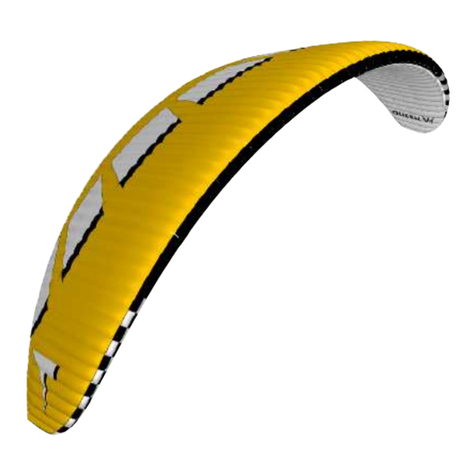
Triple Seven
Triple Seven QUEEN Series User manual

Triple Seven
Triple Seven DECK S User manual

Triple Seven
Triple Seven King 2 User manual
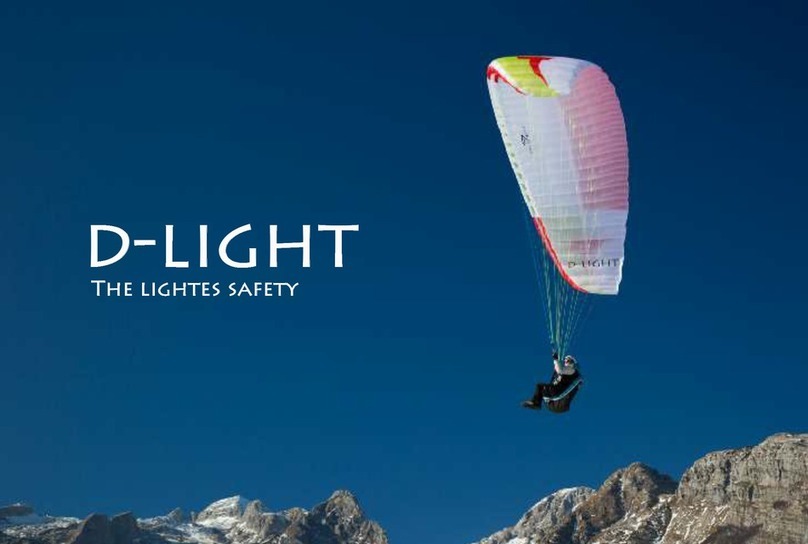
Triple Seven
Triple Seven D-LIGHT Series User manual
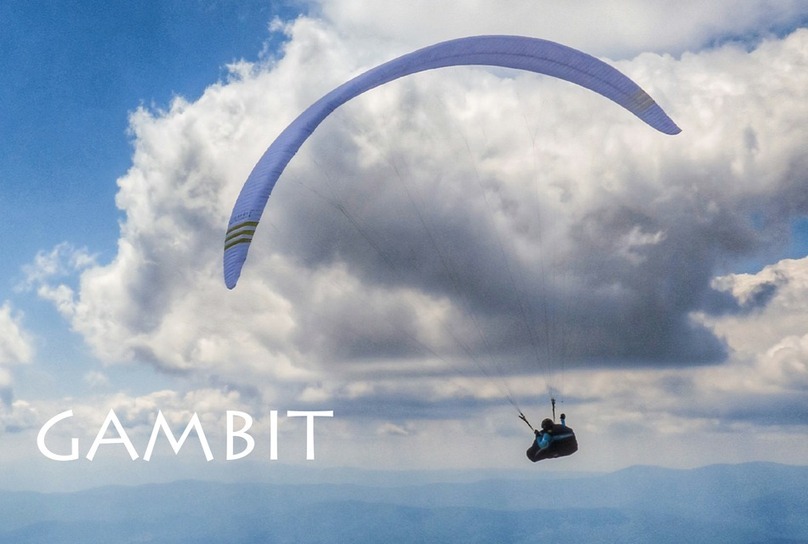
Triple Seven
Triple Seven GAMBIT User manual

Triple Seven
Triple Seven MATRIX User manual
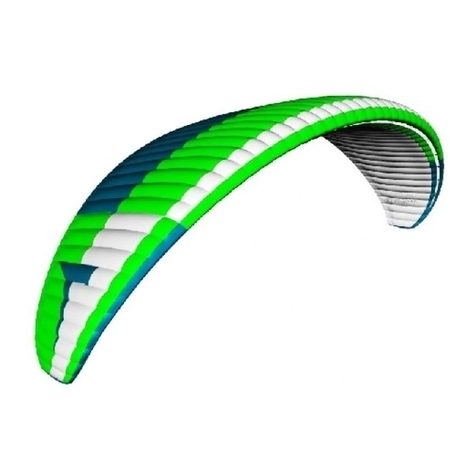
Triple Seven
Triple Seven KNIGHT Series User manual
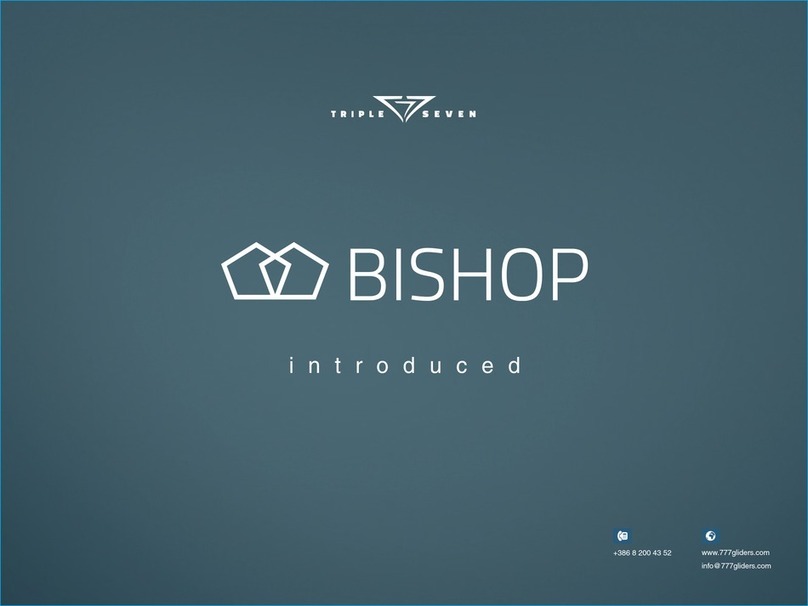
Triple Seven
Triple Seven Bishop 42 User manual
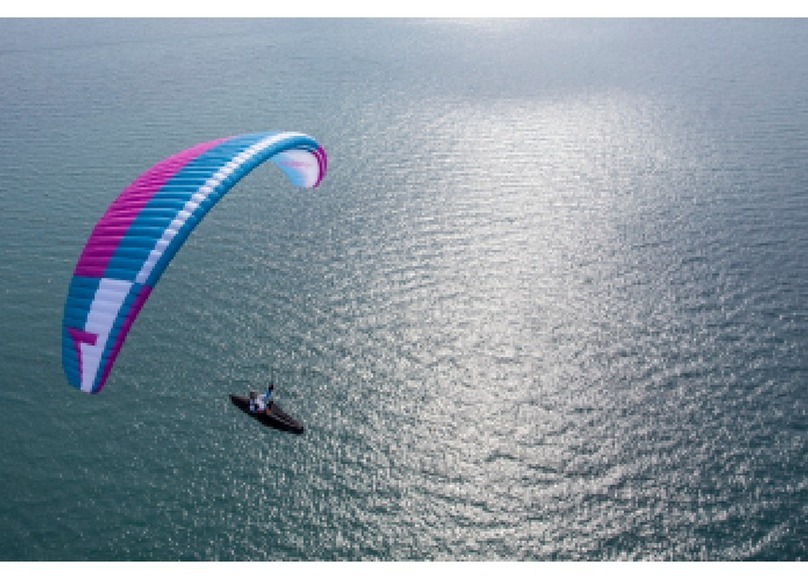
Triple Seven
Triple Seven ROOK2 User manual
